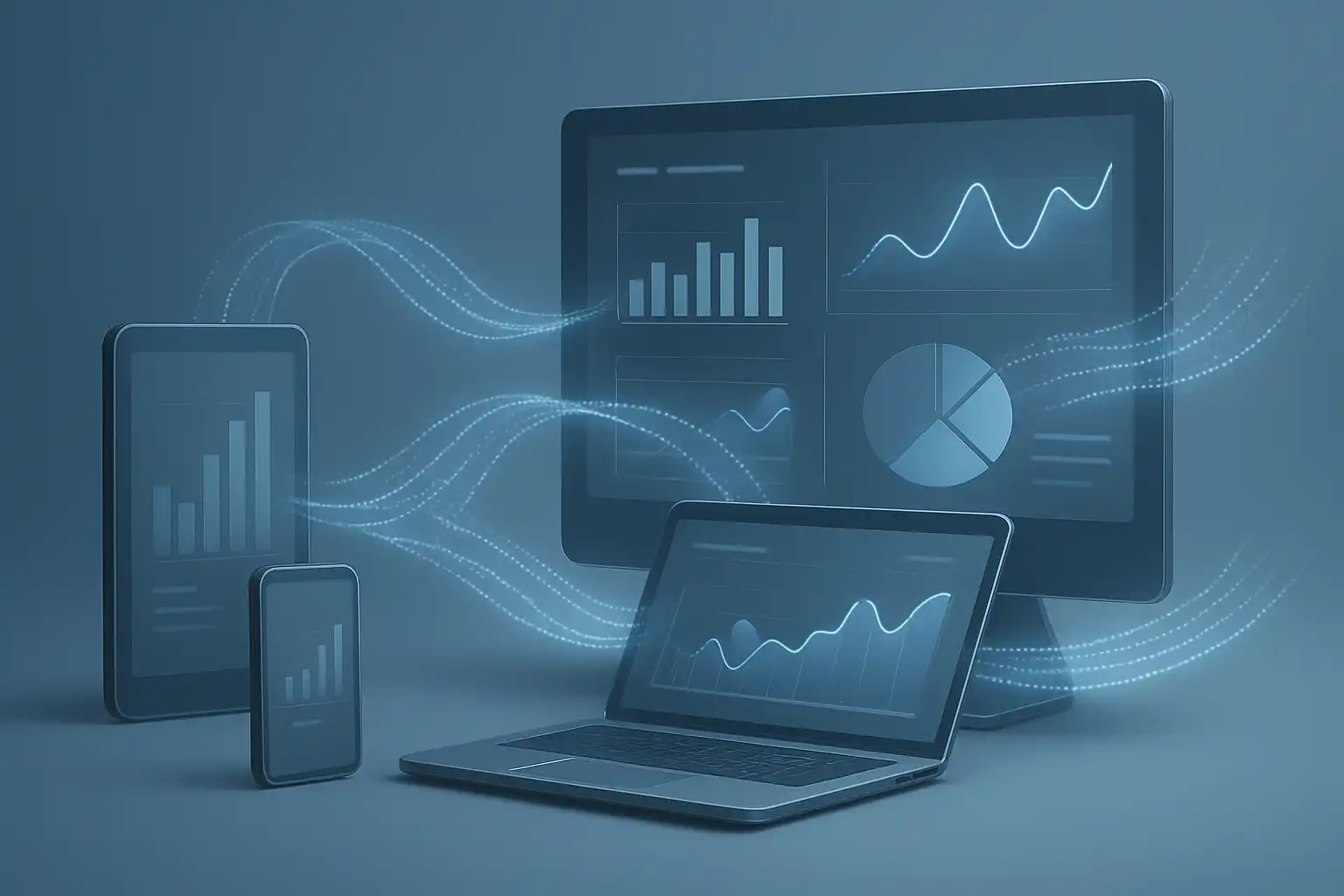
When companies need to make fast, informed decisions, waiting around for manual reports just doesn’t work anymore. Automated reporting tools are designed to remove delays and help teams act quickly. These solutions gather, process, and deliver data in real-time, so leaders can rely on up-to-date insights instead of outdated spreadsheets. By eliminating repetitive manual tasks and automating the workflow, these tools empower organizations to move ahead with confidence, knowing their decisions are backed by fresh and accurate information.
What Are Automated Reporting Tools and Why Do They Matter?
Automated reporting tools are software platforms that collect and process data from various sources, then generate reports—often instantly or on a set schedule—without human intervention. Used across all types of organizations, they play a crucial role by saving time, reducing human error, and ensuring consistency. Instead of someone manually copying numbers between files or creating charts every week, these tools do the work automatically, freeing team members for higher-value tasks.
For those working in complex, data-driven environments, such as finance, sales, or operations, having real-time automated dashboards for teams means stakeholders are always looking at the latest numbers. There’s no waiting on emails or sifting through old folders. The right reporting platform also lets users customize what they see, filter for trends, and even forecast future outcomes with just a few clicks.

How Do Automated Reporting Tools Accelerate Decision-Making?
One of the most significant benefits of these solutions is their impact on decision speed. Automated reporting tools accelerate decision-making by providing immediate access to accurate and consistent data. Teams no longer have to wait for someone to prepare the latest figures—up-to-date information is always available. This means when an urgent decision is needed, leaders can act quickly and confidently.
Moreover, these tools help standardize reporting formats and calculations. This reduces confusion and makes it easier for everyone involved to interpret results the same way. The result? Key stakeholders can instantly understand the status of the business, spot issues, and act before problems get bigger. If you are interested in collaborating with leading experts in the data field, the data science collaboration platform provides a space for real-time project synergy, further supporting efficient decision-making.
Which Features in Automated Reporting Tools Are Essential for Speed?
Choosing the best automated reporting tools means checking for key features that support swift decision-making. Here are some capabilities to prioritize:
- Robust Data Integration: The tool should pull information from diverse data sources—databases, spreadsheets, cloud apps—into one place. This ensures a complete, single source of truth without manual imports.
- Customizable Dashboards: Being able to create dashboards that fit users’ needs is vital. Teams want to see relevant metrics, KPIs, and visualizations at a glance.
- Advanced Data Visualizations: Visual tools like charts, graphs, and maps help users quickly spot trends, outliers, and patterns—fast comprehension leads to faster decisions.
- Scheduled Report Generation: With automatic scheduling, new reports arrive in team inboxes or portals without anyone having to remember or trigger the process.
- Mobile Accessibility: Decision-makers on the go benefit from mobile-friendly reporting. Whether using a tablet or phone, it’s important to access critical data anywhere, anytime.
- Advanced Analytics and Forecasting: Tools with built-in analytics and forecasting help organizations anticipate what might happen next, not just understand what happened before.
Popular Automated Reporting Tools
- Power BI: Known for its data integration and visualization capabilities, popular with businesses of all sizes.
- Tableau: Provides interactive dashboards and connects with multiple data sources.
- Google Data Studio: Cloud-based, integrates with other Google services, and is easy to share.
- Looker: Suited for those seeking custom data experiences and detailed reporting workflows.
- Zoho Analytics: Offers self-service BI with a range of automation features and strong mobile support.
How Do These Tools Reduce Manual Work and Streamline Workflows?
Automated reporting tools streamline workflows with automated reports, taking over repetitive and time-consuming tasks such as data entry, report compilation, and distribution. When these steps are automated, the risk of human error goes down significantly. Reports come out consistently formatted every time, so there’s no confusion or need to double-check formulas.
By freeing up staff from routine reporting duties, teams can redirect their energy toward analysis, strategy, and more creative problem-solving. Managers spend less time chasing data and more time guiding their teams. For organizations with remote or distributed workforces, cloud-based automated reporting for remote work ensures everyone—no matter where they are—can access the same real-time insights.
Steps to Implement Automated Reporting in Your Business
- Assess Your Needs: Understand which reports are most critical to your business and how often you need them.
- Choose the Right Tool: Evaluate options based on data integration features in reporting platforms, ease of use, and compatibility with your current systems.
- Connect Your Data: Set up secure connections to your existing databases, apps, and files.
- Design Custom Dashboards: Build dashboards that make sense for your business objectives and stakeholders.
- Set Schedules and Alerts: Automate when reports are generated and distributed. Set up alerts for key performance changes or anomalies.
- Train Your Team: Make sure users understand how to interact with the tools and interpret the data presented.
- Monitor and Improve: Gather feedback and adjust dashboards or automation rules as your needs evolve.
What Are the Pros and Cons of Automated Reporting Tools?
- Pros:
- Saves time by automating repetitive tasks
- Reduces human errors in reporting
- Provides real-time data and up-to-date insights
- Enhances collaboration through easy sharing
- Enables standardized, consistent reports
- Supports remote teams with cloud-based access
- Allows for quick data visualization and trend spotting
- Cons:
- May require initial setup time and training
- Some tools can be expensive for small businesses
- Dependence on data quality—poor data leads to poor reports
- Integration with legacy systems may be challenging
How Can Teams Collaborate More Effectively with Automated Reports?
With automated reports, teams spend less time searching for the latest numbers and more time focusing on solutions. Reports can be shared easily across departments, creating a single source of truth. This transparency ensures everyone is on the same page, which is especially important for cross-functional decision-making.
For example, a marketing team can immediately see which campaigns bring in the most sales, while finance keeps track of expenses in real time. When everyone sees the same up-to-date data, quick and unified decisions follow naturally. If your organization works on projects that require advanced data processing or natural language solutions, you might want to connect with NLP and Computer Vision Experts who can help design custom reporting workflows tailored to your objectives.
Tips for Getting the Most from Automated Reporting Tools
- Start with clear business questions when designing reports.
- Regularly review your automated dashboards to ensure they stay relevant.
- Encourage team members to provide feedback to improve report formats.
- Invest in training so everyone can confidently use the tools.
- Focus on actionable insights, not just data volume.

Frequently Asked Questions About Automated Reporting Tools
How secure are automated reporting tools with company data?
Most modern reporting tools offer strong data security features, including encryption, user access controls, and compliance with standards like GDPR. Always review a tool’s security policies before integrating sensitive business data.
Can automated reports be customized for different departments?
Yes, customization is a key advantage. Reports and dashboards can be tailored to focus on metrics relevant to each department or project, ensuring everyone gets the insights they need.
Are there free automated reporting tools available?
Several vendors offer basic versions of their reporting platforms for free, such as Google Data Studio or limited versions of Power BI. These free tools can be a great way to start before moving to more advanced, paid solutions as needs grow.
Do automated reporting tools replace analysts or just help them?
They don’t replace analysts; instead, they reduce manual workload, giving analysts more time to interpret trends, provide context, and support decision-making with deeper analysis.
